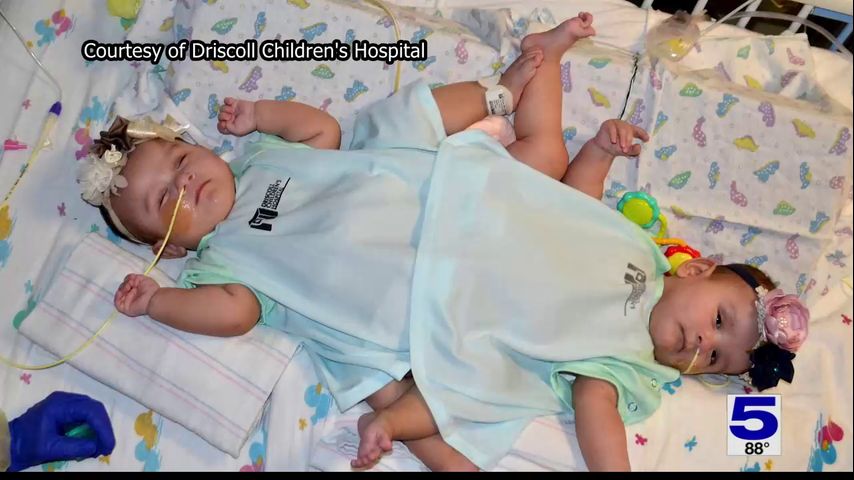‘A second chance to live’: 5 years after conjoined twins separated, Brownsville girls doing well
It's been five years since conjoined twin girls from Brownsville were separated in a Corpus Christi hospital.
Doctors say it's rare to see conjoined twins in a triplet birth, but even more rare that they are all alive and well.
"To date, there has never been a survival of a set of conjoined twins in a triplet pregnancy,” said pediatric surgeon Dr. Haroon Patel, M.D.
For most women, finding out they're going to be a mother brings on a wave of emotions, but for Silvia Hernandez-Ambriz, there was an even bigger surprise.
"I was three months pregnant when I found out,” Hernandez-Ambriz said in Spanish. “I couldn't believe it because they told me there were three girls and they came conjoined."
Identical triplets being born is rare in and of itself, but according to Dr. Stephen Almond, the chances of two of them being conjoined is even more extraordinary.
"The incidence of conjoined twins is about one in a million, so there are probably four million kids born in the United States a year,” Dr. Almond said. “So, about three or four of them will be born a year in the United States."
Physicians at Driscoll Children's Hospital decided they had the resources needed to give the babies the best chance at not only survival, but a normal life. And after around 12 hours of surgery, Ximena and Scarlett still had a ways to go.
"The teams split and one team stayed with one child and one went with the other one,” Dr. Almond said. “They required anesthesiology, orthopedic surgery, general surgery, plastic surgery, and urology."
Doctors were unable to find a case where conjoined twins born as triplets lived past a year, but in this case, the girls defied the odds— and continue to defy them every day.
"Someone was looking out for us because every step of the way, not just the separation, but even beyond, the recovery time was way ahead of schedule,” Dr. Patel said.
And today, all three of the girls, five-year-olds Ximena, Scarlett and Catalina, are thriving.
"They're all three well,” Dr. Almond said. “Running around, playing. They're in school.”
Something Hernandez-Ambriz was worried she might never see happen.
"I think the doctors gave them a second life,” Hernandez-Ambriz said. “A second chance to live."





